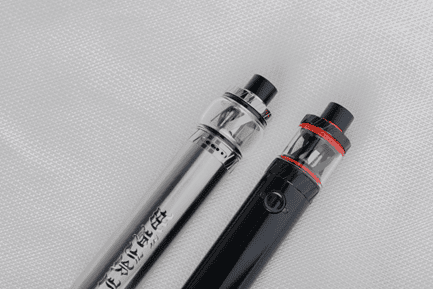
In recent years, vaping has become a popular method of consuming THC, offering users a convenient and discreet way to enjoy the effects of cannabis. However, many people may not be aware of the various methods used to extract THC for vaping purposes.
From traditional solvent-based extraction techniques to newer, more innovative methods, there are several approaches to transforming cannabis flower into vapor-ready concentrates. In this article, we’ll explore the different methods of extracting THC for vaping and discuss their respective advantages and considerations.
Solvent-Based Extraction Methods
Solvent-based extraction methods involve using chemical solvents, such as butane, propane, or ethanol, to dissolve the cannabinoids and terpenes present in cannabis flower. The resulting solution is then purged of residual solvents to create concentrates suitable for vaping. Butane hash oil (BHO), propane hash oil (PHO), and ethanol extracts are common examples of concentrates produced using solvent-based extraction techniques.
While solvent-based extraction methods can yield high-potency concentrates with robust flavor profiles, they also carry certain risks and considerations. Proper purging of residual solvents is essential to ensure the safety and purity of the final product, as any leftover solvents can pose health hazards when vaporized and inhaled. Additionally, solvent-based extraction processes require careful handling and ventilation to minimize the risk of accidents or explosions.
Supercritical Fluid Extraction: Precision and Purity
Supercritical fluid extraction (SFE) is an advanced extraction technique that utilizes supercritical carbon dioxide (CO2) as a solvent to extract cannabinoids and terpenes from cannabis plant material.
In addition, supercritical CO2 is a state of matter where CO2 is heated and pressurized to a point where it exhibits properties of both a liquid and a gas, allowing it to effectively dissolve and extract target compounds from the plant material.
One of the key advantages of supercritical fluid extraction is its precision and control over extraction parameters.
By adjusting temperature and pressure, operators can fine-tune the extraction process to extract specific compounds while leaving undesirable components behind selectively. This precision allows for producing highly pure and potent extracts with minimal risk of contamination or degradation.
Supercritical CO2 is also considered a safe and environmentally friendly solvent, as it is non-toxic, non-flammable, and readily available. Additionally, CO2 is easily removed from the final product through evaporation, leaving behind a clean and solvent-free concentrate. This makes supercritical fluid extraction particularly well-suited for producing concentrates for medical and pharmaceutical applications, where purity and safety are paramount.
Despite its advantages, supercritical fluid extraction also has some limitations.
The equipment required for SFE can be expensive and complex, making it less accessible to smaller-scale producers. Additionally, the extraction process can be time-consuming and energy-intensive, requiring careful monitoring and control of operating parameters. However, for those with the resources and expertise to implement it, supercritical fluid extraction offers unparalleled precision and purity in cannabis extraction.
Hydrocarbon Extraction: High Efficiency and Yield
Hydrocarbon extraction is a widely used method for producing cannabis concentrates, known for its high efficiency and yield.
In this process, hydrocarbon solvents such as butane, propane, or a blend of hydrocarbons are used to extract cannabinoids and terpenes from cannabis plant material. Hydrocarbon extraction is highly efficient and capable of extracting a high percentage of target compounds from the plant material in a relatively short time.
One of the primary advantages of hydrocarbon extraction is its ability to produce concentrates with high potency and flavor.
Hydrocarbon solvents can effectively dissolve cannabinoids and terpenes, resulting in extracts that retain the original plant material’s natural aroma and flavor profile. Additionally, hydrocarbon extraction can yield concentrates with a wide range of textures and consistencies, from shatter and wax to budder and sauce, providing options to suit different consumer preferences.
Hydrocarbon extraction is also favored for its high extraction efficiency and yield. Compared to other extraction methods, hydrocarbon extraction can recover a larger percentage of cannabinoids and terpenes from the plant material, maximizing the yield of the final product. This efficiency makes hydrocarbon extraction a cost-effective option for large-scale cannabis processing operations, where maximizing yield is crucial for profitability.
However, hydrocarbon extraction also carries certain risks and considerations. Hydrocarbon solvents are highly flammable and can pose safety hazards if improperly handled.
Proper equipment, training, and ventilation are essential to minimize the risk of accidents and ensure worker safety. Additionally, residual solvents must be carefully purged from the final product to meet safety standards and regulations. Despite these challenges, hydrocarbon extraction remains a popular choice for producing high-quality cannabis concentrates valued for their potency, flavor, and versatility.
CO2 Extraction
Carbon dioxide (CO2) extraction is a solventless method that uses pressurized CO2 to extract cannabinoids and terpenes from cannabis flowers. This method relies on the ability of CO2 to function as both a solvent and a gas, allowing for precise control over extraction parameters such as temperature and pressure. CO2 extraction produces high-quality concentrates that are free of residual solvents and retain the full spectrum of cannabinoids and terpenes present in the original plant material.
CO2 extraction is favored for its safety, efficiency, and scalability, making it popular for commercial cannabis extraction operations. Additionally, CO2-extracted concentrates are often preferred by consumers for their clean flavor profiles and potent effects. However, CO2 extraction equipment can be expensive to purchase and operate, limiting its accessibility to smaller-scale producers.
Rosin Pressing
Rosin pressing is a solventless extraction method that uses heat and pressure to squeeze THC-rich resin from cannabis flowers.
This technique involves placing cannabis flowers between parchment paper and pressing it with a heated hydraulic press or specialized rosin press machine. The heat and pressure cause the resin glands (trichomes) in the flower to rupture, releasing a sticky, golden concentrate known as rosin.
Rosin pressing is prized for its simplicity, safety, and accessibility, as it requires minimal equipment and does not involve using any chemical solvents.
Additionally, rosin preserves the full spectrum of cannabinoids and terpenes in the original flower, resulting in a flavorful and aromatic concentrate. However, rosin pressing typically yields lower quantities of concentrate than solvent-based extraction methods, making it less suitable for large-scale production.
From solvent-based extraction methods like BHO and CO2 extraction to solventless techniques like rosin pressing, there are various methods of extracting THC for vaping.
Each method offers its advantages and considerations, ranging from potency and flavor to safety and scalability. By understanding the differences between these extraction techniques, consumers can make informed choices about the types of concentrates they prefer to use in a THC vape pen and the brands they support.

















Follow Us